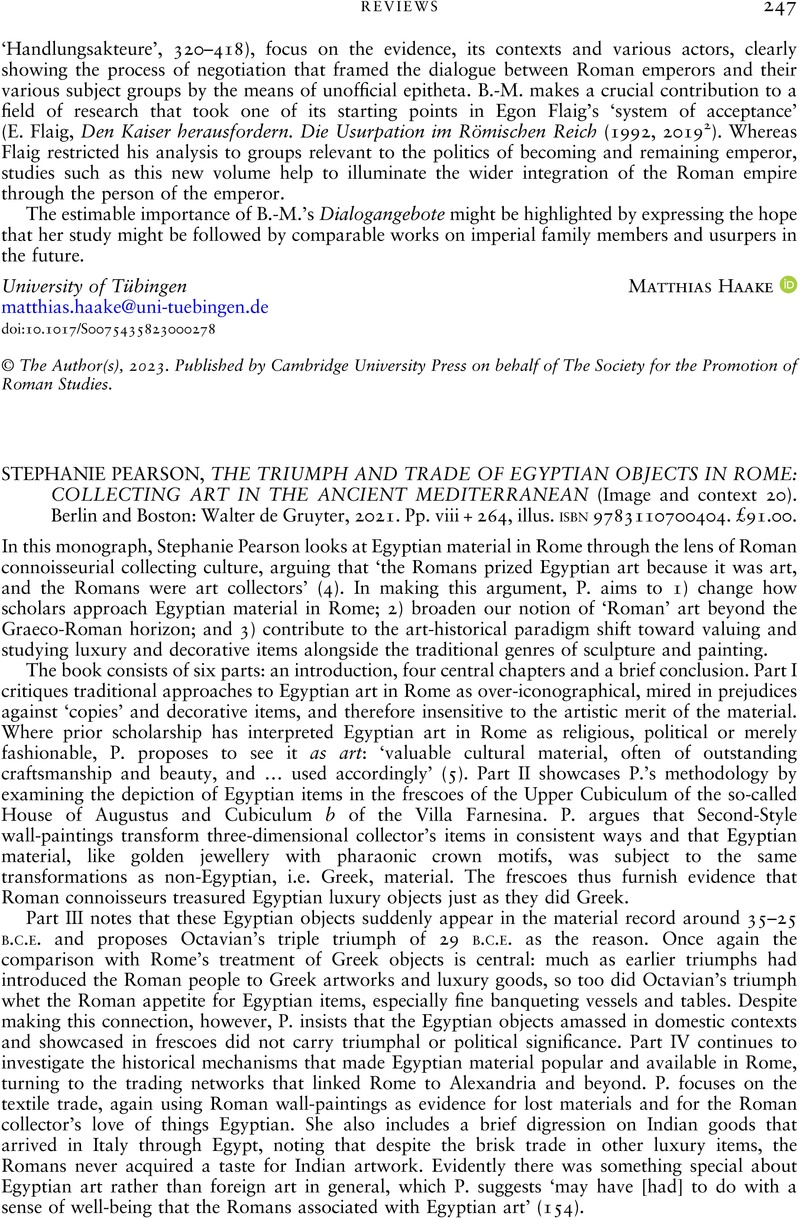No CrossRef data available.
Article contents
STEPHANIE PEARSON, THE TRIUMPH AND TRADE OF EGYPTIAN OBJECTS IN ROME: COLLECTING ART IN THE ANCIENT MEDITERRANEAN (Image and context 20). Berlin and Boston: Walter de Gruyter, 2021. Pp. viii + 264, illus. isbn 9783110700404. £91.00.
Review products
STEPHANIE PEARSON, THE TRIUMPH AND TRADE OF EGYPTIAN OBJECTS IN ROME: COLLECTING ART IN THE ANCIENT MEDITERRANEAN (Image and context 20). Berlin and Boston: Walter de Gruyter, 2021. Pp. viii + 264, illus. isbn 9783110700404. £91.00.
Published online by Cambridge University Press: 21 November 2022
Abstract
An abstract is not available for this content so a preview has been provided. Please use the Get access link above for information on how to access this content.

- Type
- Reviews
- Information
- Copyright
- Copyright © The Author(s), 2022. Published by Cambridge University Press on behalf of The Society for the Promotion of Roman Studies


